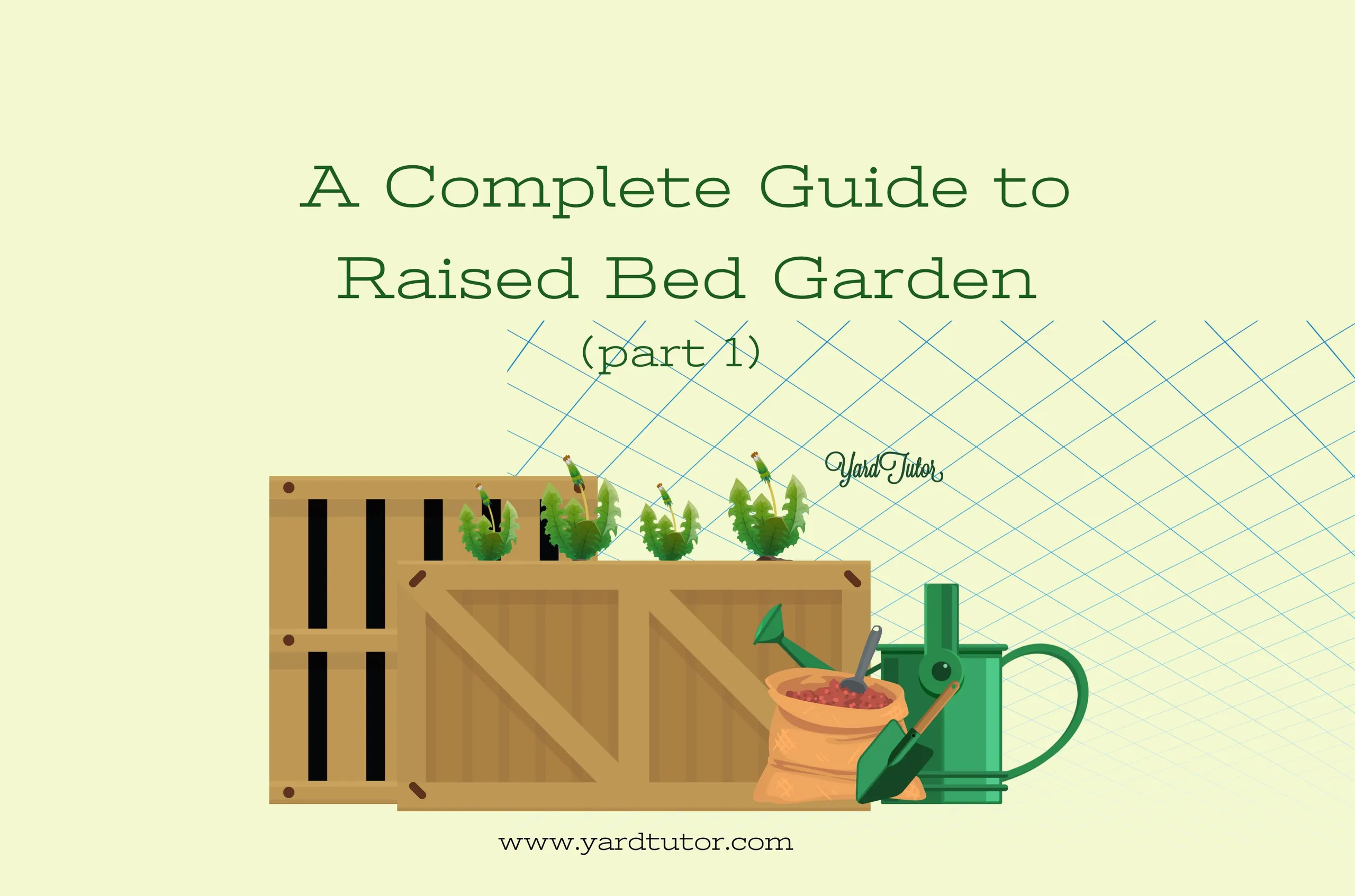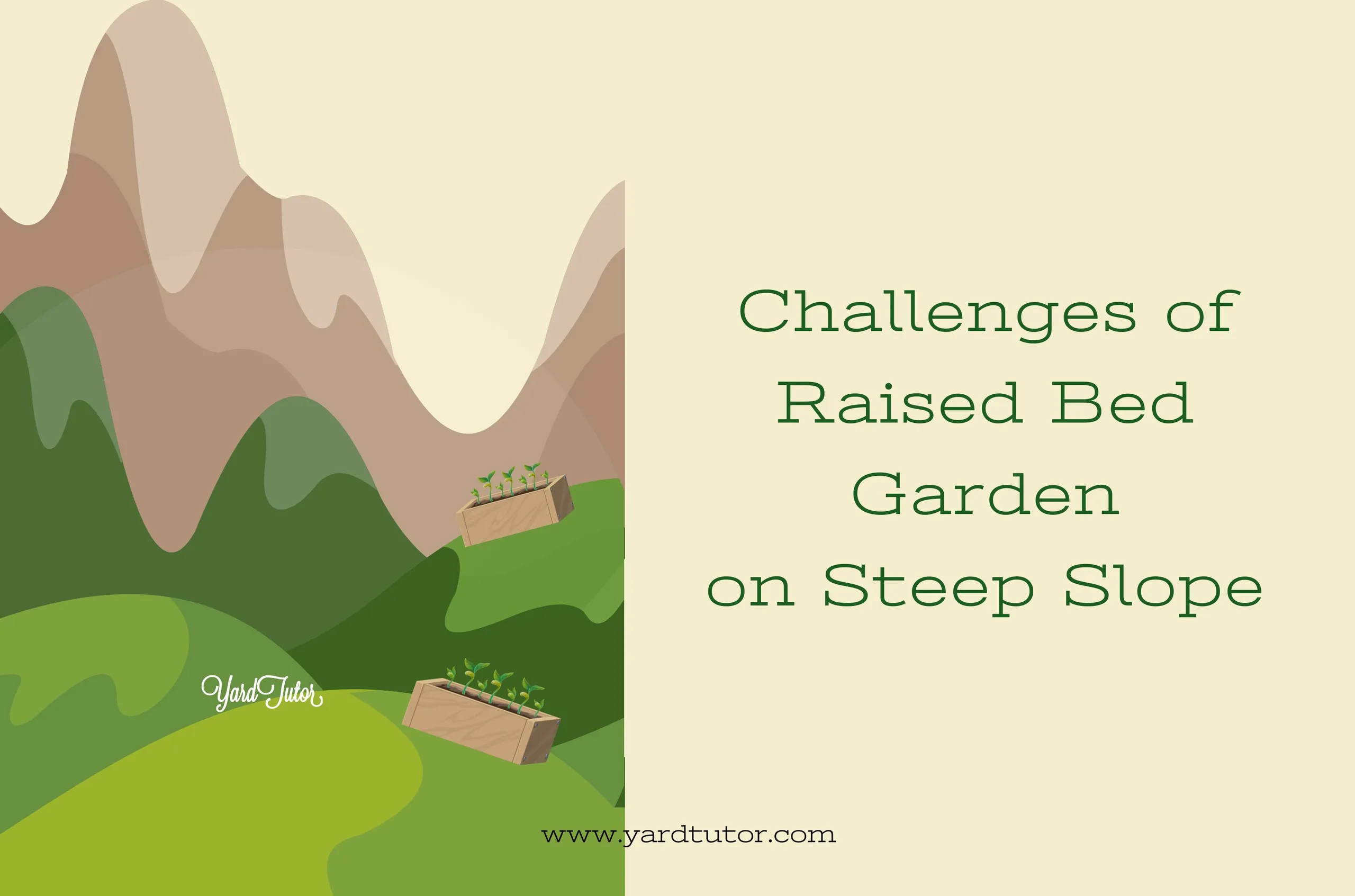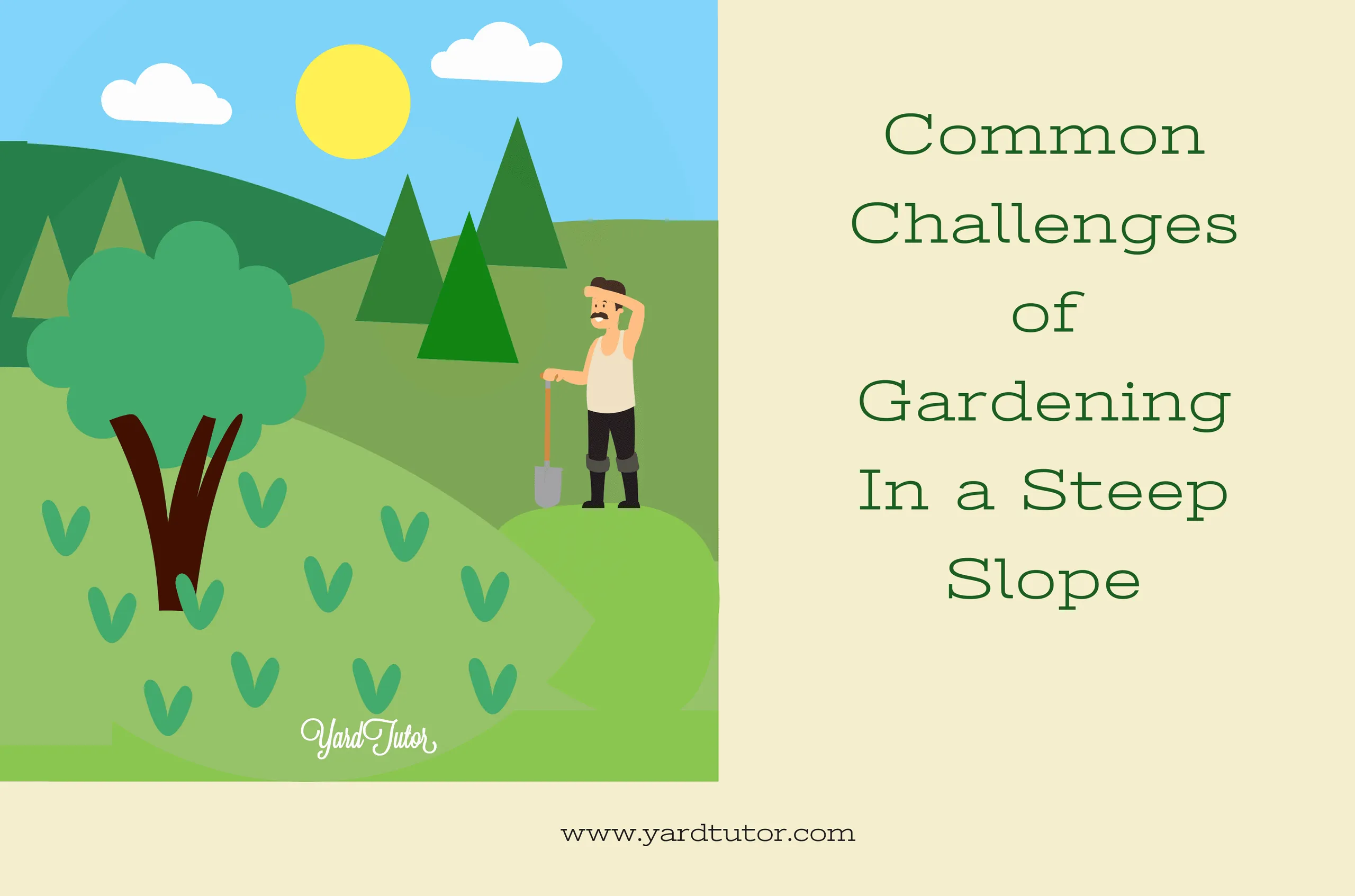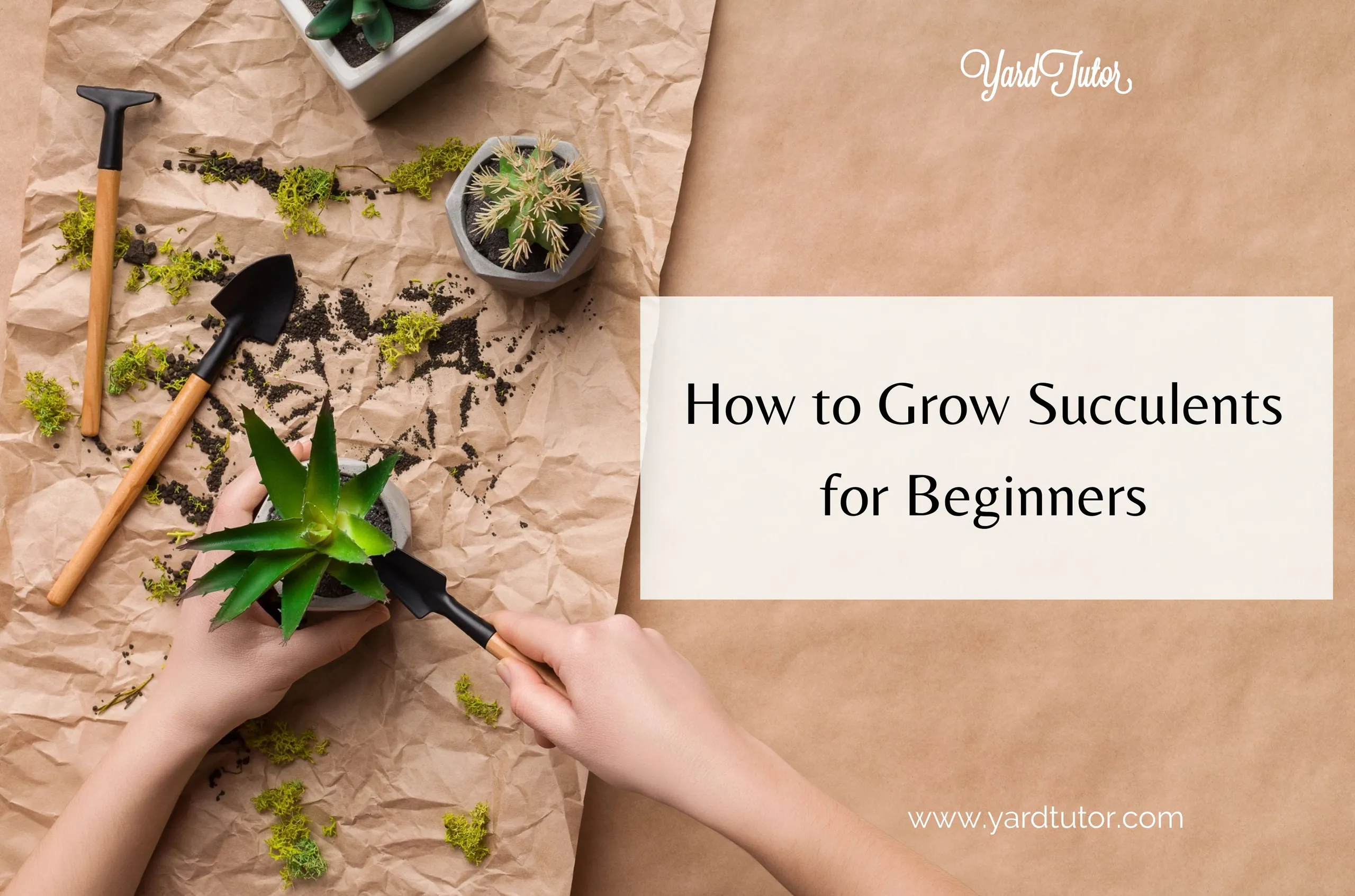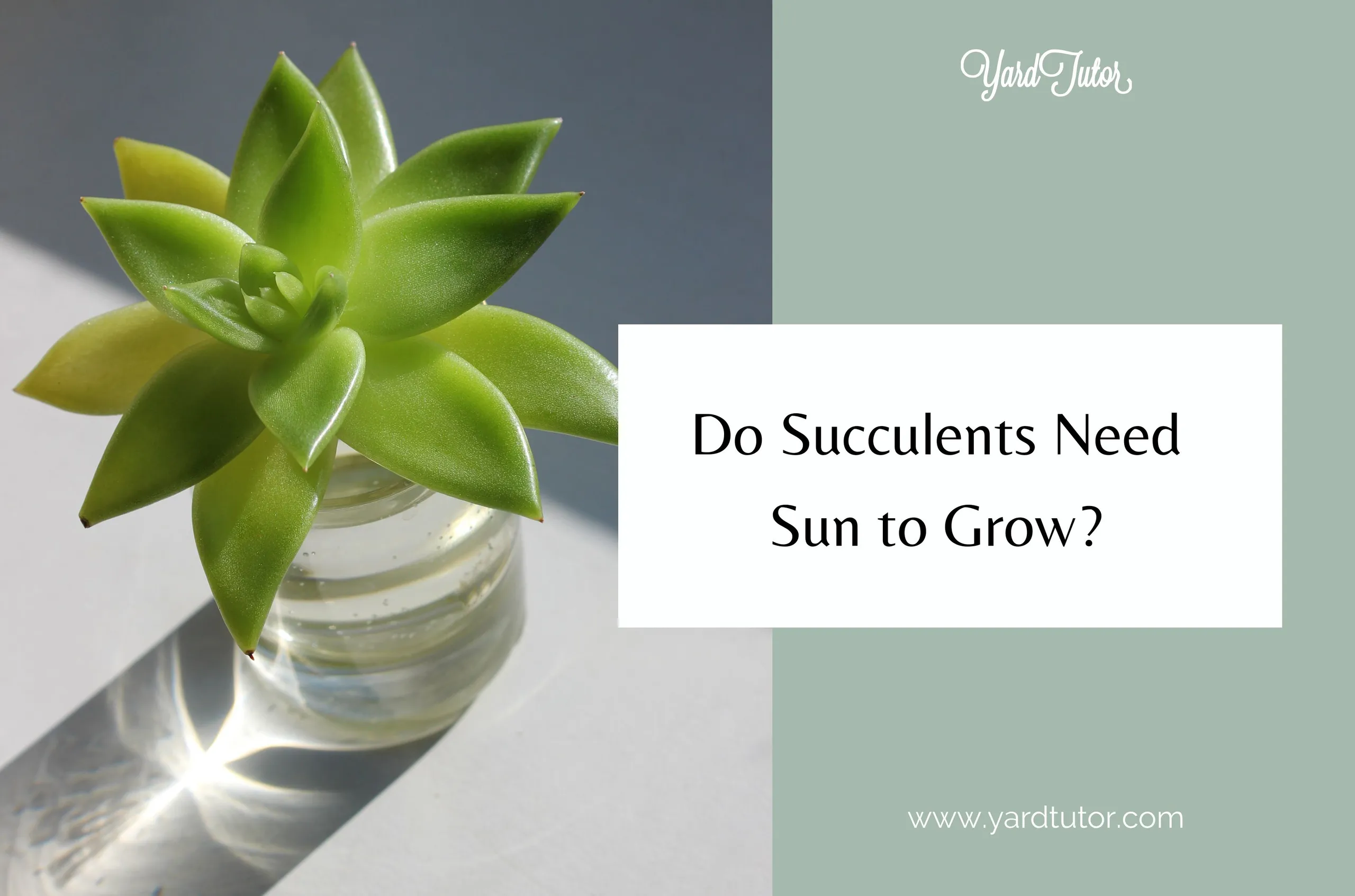The Best Raised Bed Garden Setup To Start With For A Beginner

Discover the best raised bed garden setup for beginners! Learn easy tips on soil, materials, and layout to grow healthy plants with minimal effort.
Gardening has recently become quite popular worldwide, and the trend has been growing favorably for quite some time. Not only does it have numerous positive health effects, but it's also an enjoyable hobby. A lot of people begin gardening for pleasure, while others do it to meet their needs for fresh veggies. And, for a variety of good reasons, many new gardeners want to grow their veggies on raised beds. Raised bed gardening offers advantages that other styles don't. It
- requires less space
- needs less maintenance
- has better water drainage and irrigation
- infestations of weeds and other invasive plants occur much less frequently
- has longer growing seasons
- enables people with back problems to garden comfortably
But building a raised garden is not an easy task due to the numerous steps involved. This can be quite intimidating for a beginner. This article will walk you through the process of building a raised bed garden in five simple steps and help you avoid many common mistakes.
Step 1: Site Selection For Your Raised Bed

The first step in creating a raised bed garden is deciding where the beds will be located because the growth of your plants depends on this choice. Without an appropriate site, you won't have a fruitful garden. When selecting a place for the raised beds, there are a few things to keep in mind, including:
- Exposure to sunlight
Sunlight exposure is one of the most crucial aspects to pay attention to for both flowers and vegetables. Find a spot in your yard that receives continuous sunshine throughout the day. Most veggies require at least 8 hours of direct sunlight per day, although 6 hours is the absolute minimum. Before arranging the beds, you should examine whether any tall buildings or trees will obscure the sun's light.
Yes, you can place the beds in an area that receives less direct sunlight, but you'll have fewer options for plants that you can successfully grow. Bear in mind that it is best to build beds on the south side if you live in the northern hemisphere and on the north side if you live below the equator line.
- Easy access to water
The second factor to take into account while choosing a location for your raised garden is accessibility to a water source. Make sure there is a nearby source of water that is easy to access. The raised beds should be placed adjacent to an external water source because extra water will likely be required during dry and hot seasons.
Additionally, you may lose interest in gardening if you have to carry barrels of water around every day. If there is a water source close by, you are much less likely to avoid watering.
- Level ground
Take into account the terrain where the beds will be placed. Level ground is best for constructing raised gardens. Sure, you can build raised beds on a steep slope, but doing so would require additional resources and a lot of digging!
- Protection from strong winds
Make sure the garden area is shielded from wind gusts. Wind gusts can dry out the raised bed soil and damage tall plants as well. These plants, as well as, large fruit-bearing plants like tomatoes or eggplants, require protection from strong winds. You may want to pick a location with a sturdy barrier, such as a row of trees, a fence, or another building that can shield your raised garden beds from the wind's harmful effects.
However, if you have to make raised bed gardens at a place where wind gusts is expected then you can use other protective methods to safeguard the plants which will cause you some expense out of your pocket.
- Convenience
Arrange the beds as close to your house as you can. If placing them near your house is not possible, choose a location as close to where your regular activities happen. This will allow you to keep a close eye on your garden and interact with it more.
Step 2: Planning Your Raised Bed Garden

The next step in building raised bed garden is to plan the whole thing. A lot of things go into building raised bed garden. You run the risk of making numerous mistakes if you don't have a plan. You could avoid a lot of future problems by planning the garden before constructing the beds. When planning raised bed gardens, there are a few things you need to keep in mind.
What Dimensions Should You Start With?
This depends entirely on your garden space and how many plants you want to grow on the beds. Typically, raised beds measure between six and eight feet long and three to four feet wide, however, you can alter the size to match your needs.
However, it's essential to make the beds narrow enough so that you can access the soil from both sides of the beds. This also makes it possible to dig out weeds and sow your plants without having to enter the garden, thus eliminating the risk of soil compaction. But the roots expand both laterally and downward, so you must make your beds broad enough for good root growth.
Additionally, you should consider the beds' height. Normally, heights range from eight to twelve inches. Make sure your raised bed is deep enough for plants if it will be placed on pavement or any other hard surfaces. Keep in mind that deep-rooted plants, such as tomatoes and eggplants (up to 24 inches), require more space to spread their roots than shallow-rooted plants, such as cabbage or spinach (up to 18 inches).
How Many Beds Will Be Ideal? One or Two?

This is entirely dependent on your needs and the available space. If you're short on time, space, or resources, you might choose to begin with just one. You'll likely need at least 3 or 4 beds if you're trying to grow a large quantity of your own fresh veggies to feed your family.
Just keep in mind that certain plants don't combine well with others. They can be directly competing for the same vital nutrients, or one of them might draw bugs that damage the other. For these reasons, if you're attempting to grow a diverse range of plants, two or more beds may be appropriate.
Additionally, it is preferable to have two separate raised beds with a pathway in between rather than one long one for persons who have difficulties while moving.
Ideal Path Width
The width of the pathways is dependent on the amount of room you have and the size of your beds. The recommended pathway size for beds that are 4 feet wide is 20 to 24 inches. This will provide adequate moving space while maximizing the planting area in a smaller raised garden. Although it is advised to build more than one path if you have a large garden. Allow 48 inches between beds on paths so that wheelchairs, wheelbarrows, and carts can traverse.
Available Materials
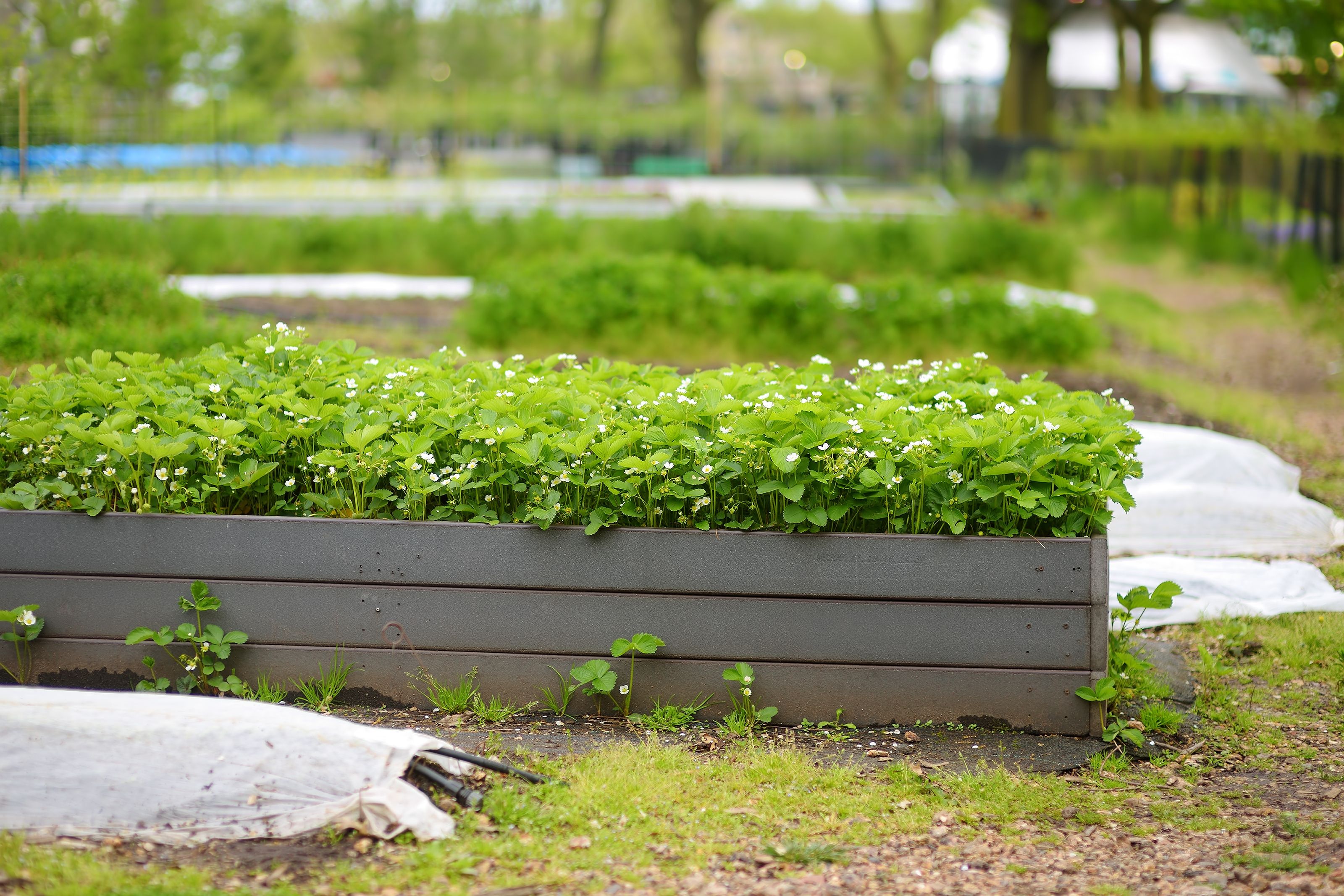
Next on the list is picking the appropriate material from which you'll build your raised beds. There are different materials you can use to construct your bed frame, including:
- Treated, untreated, and composite wood/lumber.
- Galvanized Metal
- Plastic
- Tires
- Bricks
- Concrete blocks
- Railroad ties
- Stone
You can also find prefabricated bed frames in local shops built out of plastic or metal.
Select Material Perfect for Your Raised Garden Bed
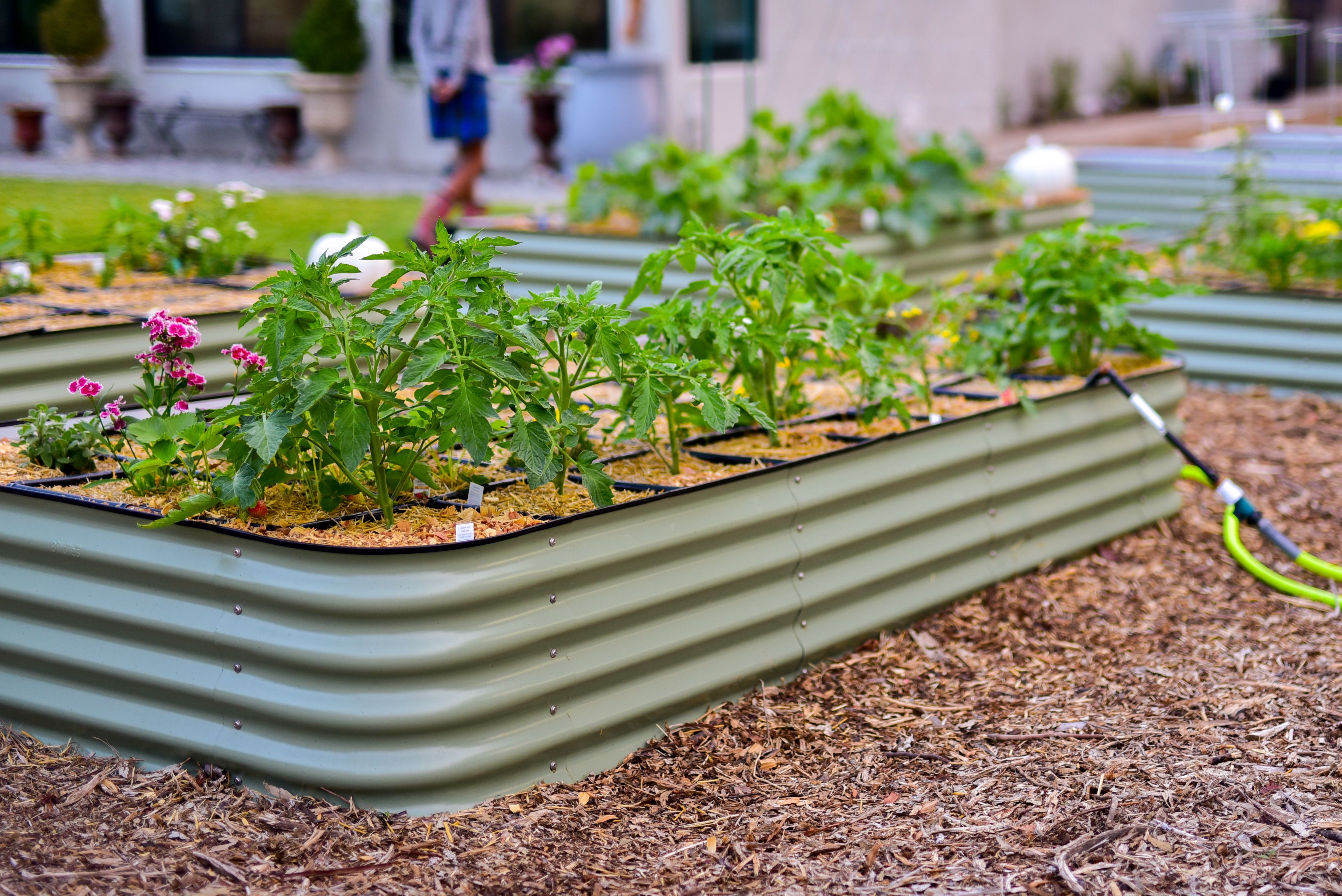
Given the wide variety of options, picking the ideal material for building raised garden bed could be incredibly daunting. Before choosing a material, you should think about its flexibility, price, and how your region's weather will affect it. Below is a breakdown of the benefits and drawbacks of the most common materials so you can determine which is perfect for your beds.
- If you want the beds to survive for a long time, choose sturdy, long-lasting materials like concrete blocks to build them. But keep in mind that these need additional equipment and expertise to work with.
- Untreated or raw woods, like cypress or cedar, might be pricey but have a long lifespan and can withstand dampness. But keep in mind that eventually, all types of untreated wood will need to be replaced. The type of wood you’ve chosen, and your surroundings will affect its longevity.
- On the other hand, treated wood could last longer, but it is not advised to use it since it can release harmful chemicals into the soil. Additionally, you shouldn’t utilize composite wood since they tend to buckle.
- For extremely humid environments, galvanized metal raised beds are a fantastic option. You can also buy prefabricated metal beds from local garden shops. However, metal beds will retain and reflect more solar heat than other materials. Your soil will likely dry up more rapidly because of this. Also, zinc from galvanized metal can seep into the raised bed soil.
- Another durable material that can be utilized to make bed frames is stone. Utilizing stone is undoubtedly safe because it is a natural material. You might have to put forth more effort in building the beds with stones because natural stones don't come in ideal shapes and sizes.
- Although you may have seen individuals utilizing tires as raised beds, it is recommended that you do not do so even if they are available for free. Tires’ rubber deteriorates in hot, humid weather and the chemicals seep into the soil.
- Avoid using railroad ties. Creosote, which is toxic to both plants and people, is used in the construction of railroad ties.
Decide a Design
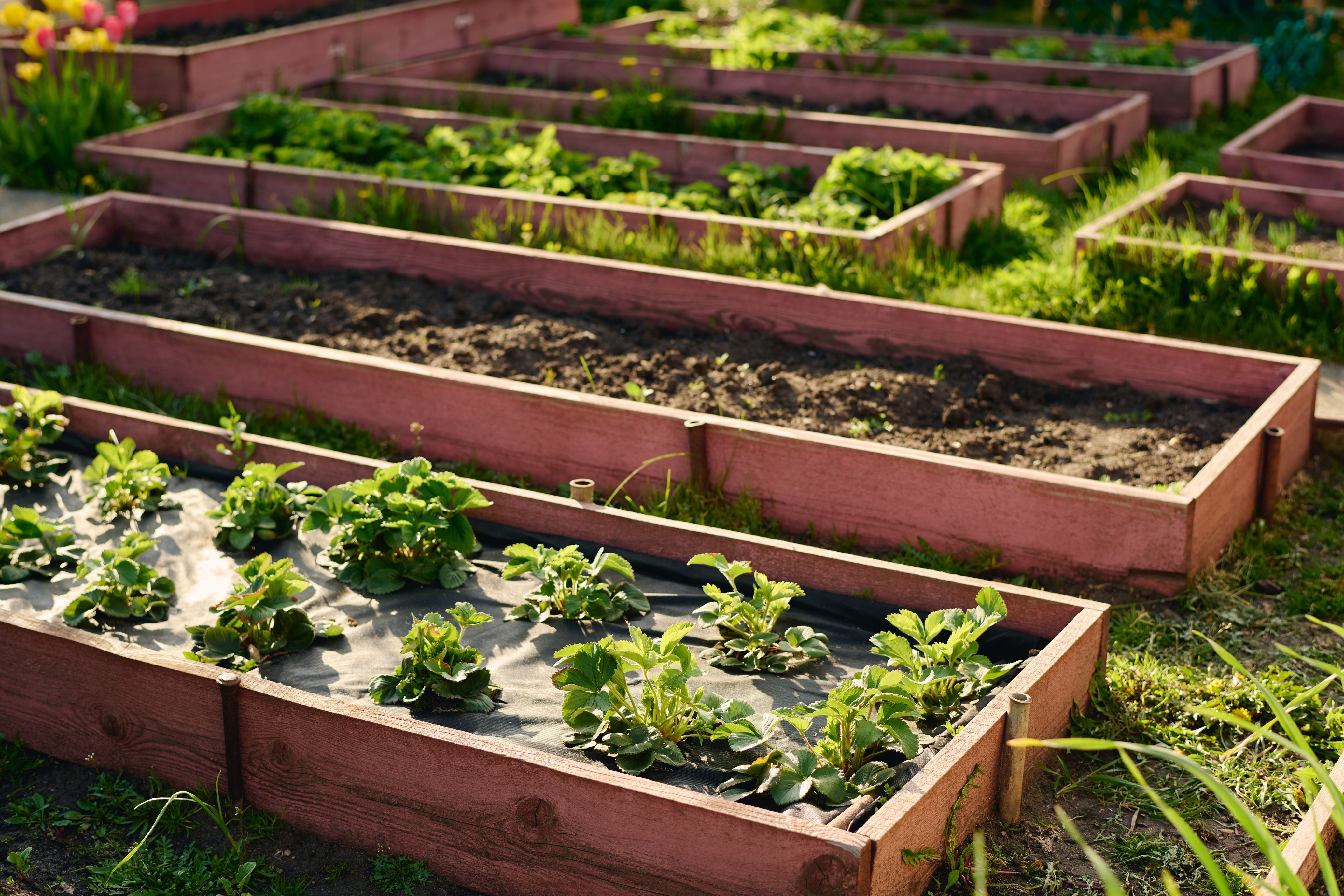
Next, select a design that appeals to you and complements the area around the garden. Most materials won't cause any problems if you use the standard rectangular bed design. Wooden boards and lumbers, however, are unsuitable if you want curved walls.
Concrete blocks or bricks come in a variety of shapes and sizes so you might choose to use them if you want curved or semi-curved walls for your raised beds. Stone beds are rigid, making customization difficult. But you can easily create square raised beds with flat stones.
If you are proficient at metalworking, you may select metal and create the beds in whatever shape you like. You may also purchase readymade beds; they come in a variety of sizes, colors, and styles; however, the square ones are by far the most popular. But whatever design you pick, accessibility should be a priority.
Step 3: Set up the Raised Garden Bed
It's time to proceed to the following step now that you have decided on the design, size, and materials for your raised beds. Here are a few raised bed garden ideas that you may use while constructing the beds.
The Structure
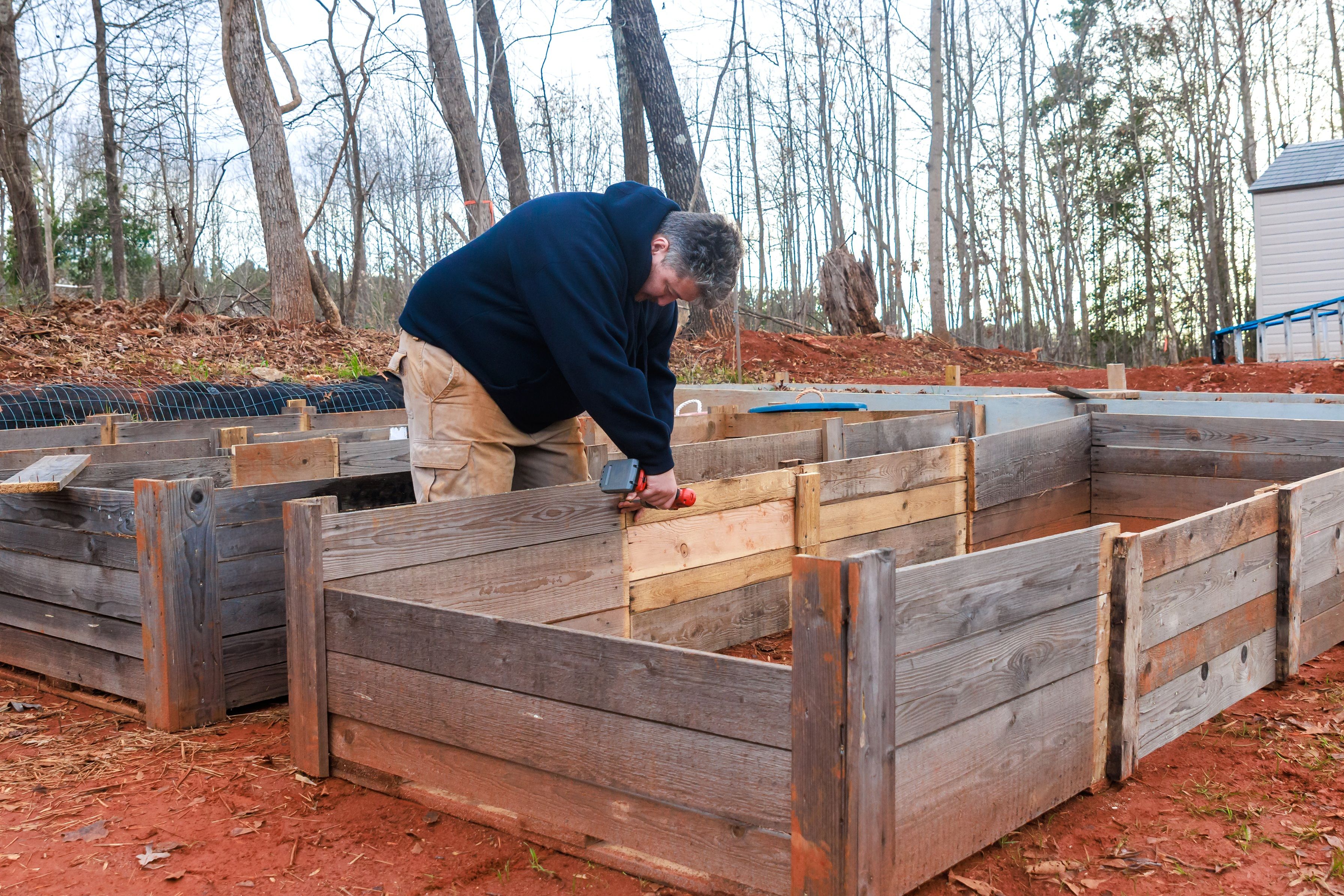
The first thing you need to do is construct your raised garden beds. The construction procedure is entirely dependent on the material you have selected. For beginners, lumber and concrete blocks are easier for building raised garden beds.
It's quite simple to construct beds out of concrete blocks; simply purchase the appropriate number of blocks for your beds, arrange them in the shape of your bed, and fill in the gap within the structure with soil. If concrete blocks are just one or two layers high, mortar won't likely be necessary. If your beds have three or four layers, apply mortar to keep them firm.
If you want to build the raised bed planters with lumber, first create a framework for them in the size of your choice. Use a stapling gun to create a square or rectangular frame. You can also use L-shaped brackets for extra stability. Then lay them flat on the ground first, one piece on top of the other, leaving no gap between them. Remember to drill holes at 20 ° into the lumber and insert steel rods at least 12 ” into the ground below to make the structure sturdy. To bind each layer of lumber to the one beneath it, you should use galvanized nails.
Dealing With Existing Vegetation
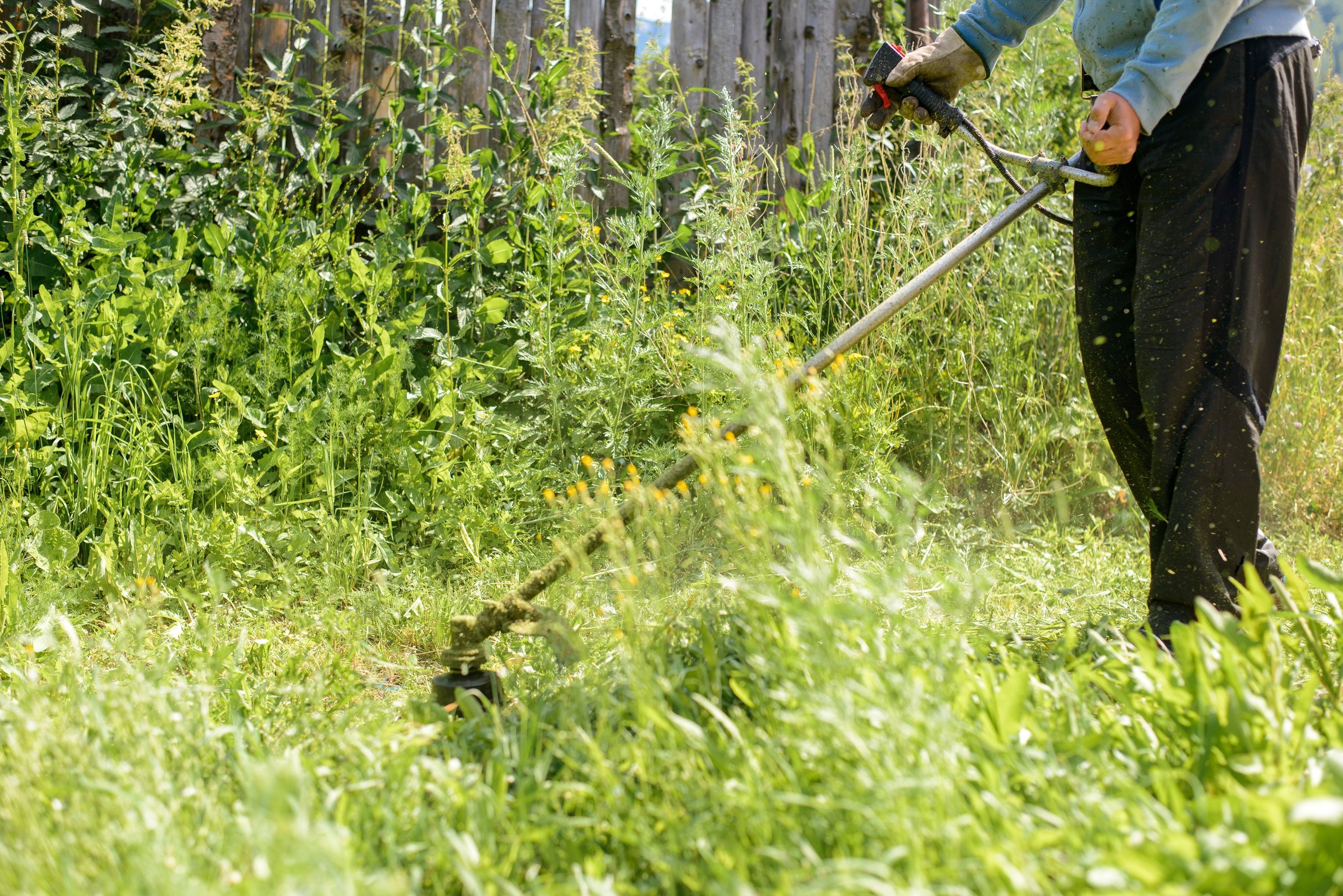
After constructing your raised garden beds, you must now focus on the garden space. The first step is to clear the area of any weeds, grass, and other unwanted vegetation. The plants might vie with weeds for root space, moisture, and nutrients if the ground is not cleaned before you plant. You can either go all-natural or use chemical or mechanical means for this.
Before anything, you should cut the grass, and pull out any bushes, weeds, and tree roots.
You can also use soil solarization for this. It is a nonchemical method to get rid of weeds. The process entails heating the ground for 4 to 6 weeks during the summer by covering it with transparent plastic sheets.
Mulching can also help get rid of the grass. To get rid of deeply rooted grasses, you can use a sod cutter. However, if you have a small garden, you might want to consider other strategies.
Herbicides are another option for eliminating all unwanted plants. However, this has more negative effects than positive ones. Herbicides should only be used if other approaches fail to remove the invasive plants.
Water in and Water Out: Irrigation & Drainage
The next factors to take into consideration are adequate irrigation and drainage system. Your raised garden beds should be built next to a water supply, as previously mentioned. You should water your beds in the morning. This will hydrate your plants before the heat of the day starts to damage them.
Additionally, remember that you need to water more frequently during the hot and windy periods. However, avoid over- or underwatering your plants. If you are short on time, you could invest in an automated irrigation system. You may water your plants with sprinklers or drip lines as well, but make sure to water the roots rather than the foliage.
You also need proper drainage for your raised beds. Along with causing root rot, wet soil can hinder plant development. If you have closed-bottom raised beds try to cut holes in the bottom. If your beds are not closed-bottomed, then using good-quality soil should be enough for drainage.
Line the Bottom of Your Raised Garden Bed
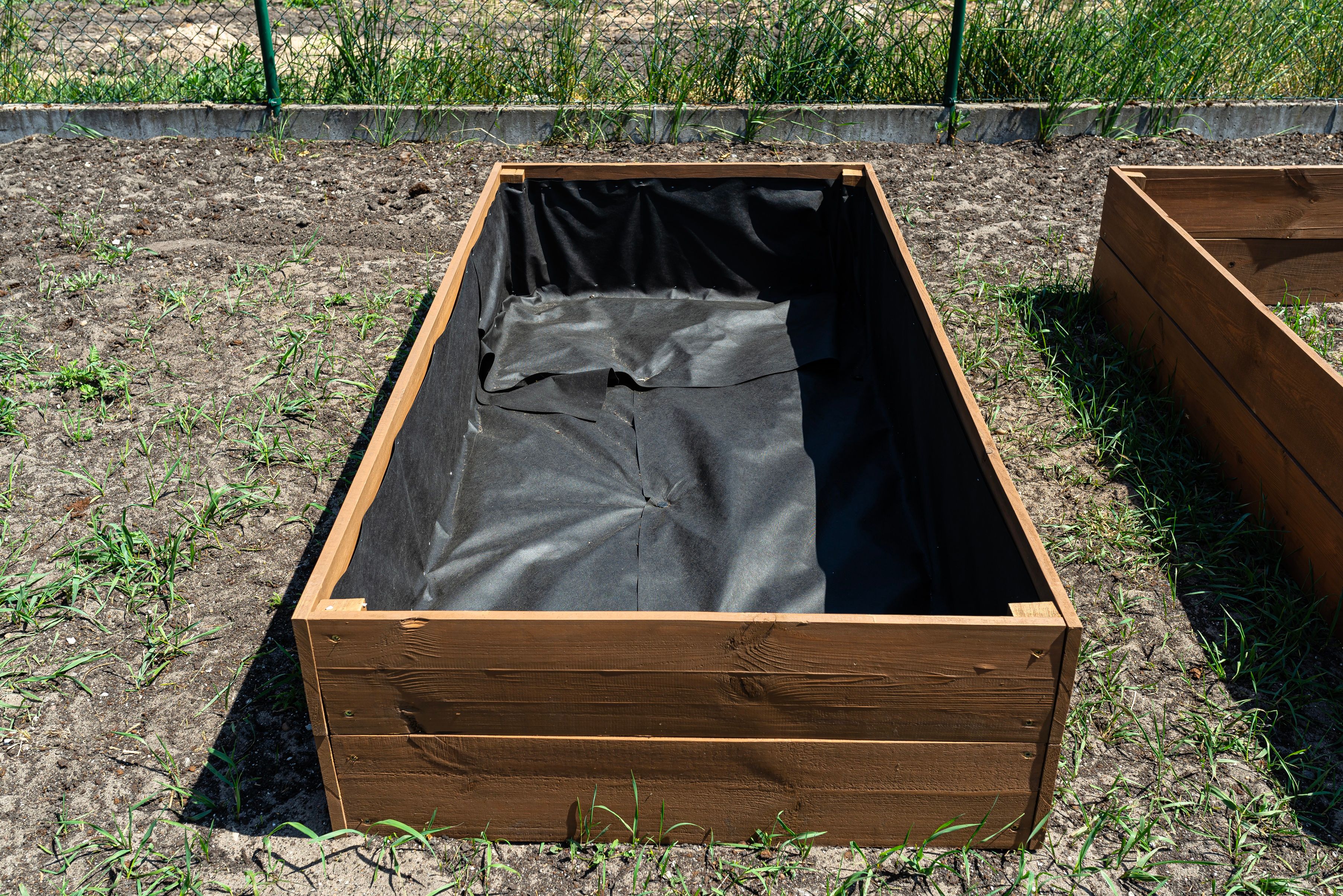
The next step is to use fencing material to line the interior bottom of the raised bed planters to stop weed growth from underneath. For this, you can use cardboard or landscape fabric. Plastic sheets are another option, although they could prevent water from draining.
The ideal material for lining the bottom of raised garden beds is hardware cloth. Plated hardware cloth won't corrode, is incredibly durable, and the holes in the mesh are small enough to prevent the growth of weeds.
How to use hardware clothes
First, you must cut the hardware cloth according to the size of your beds to line the bottom. Nevertheless, cut it in such a way that a few inches dangle over each side of the bed. Then, you should use a stapling gun or tiny screws to secure it to the bed. You can either attach it to the outside or the inside of the bed. In addition, you should put landscape fabric over the hardware cloth. This will provide optimal drainage as well as retaining the soil
Step 4: Soil Preparation For Your Raised Garden Bed
The most essential part of fruitful raised bed gardens is fertile soil. In a garden with loose, nutrient-rich soil, plants can grow swiftly and healthily. For a beginner, choosing the right soil mixture can be challenging because there are many factors to take into account. To make the process simpler, below are some easy-to-follow guidelines.
Is There Perfect Soil?
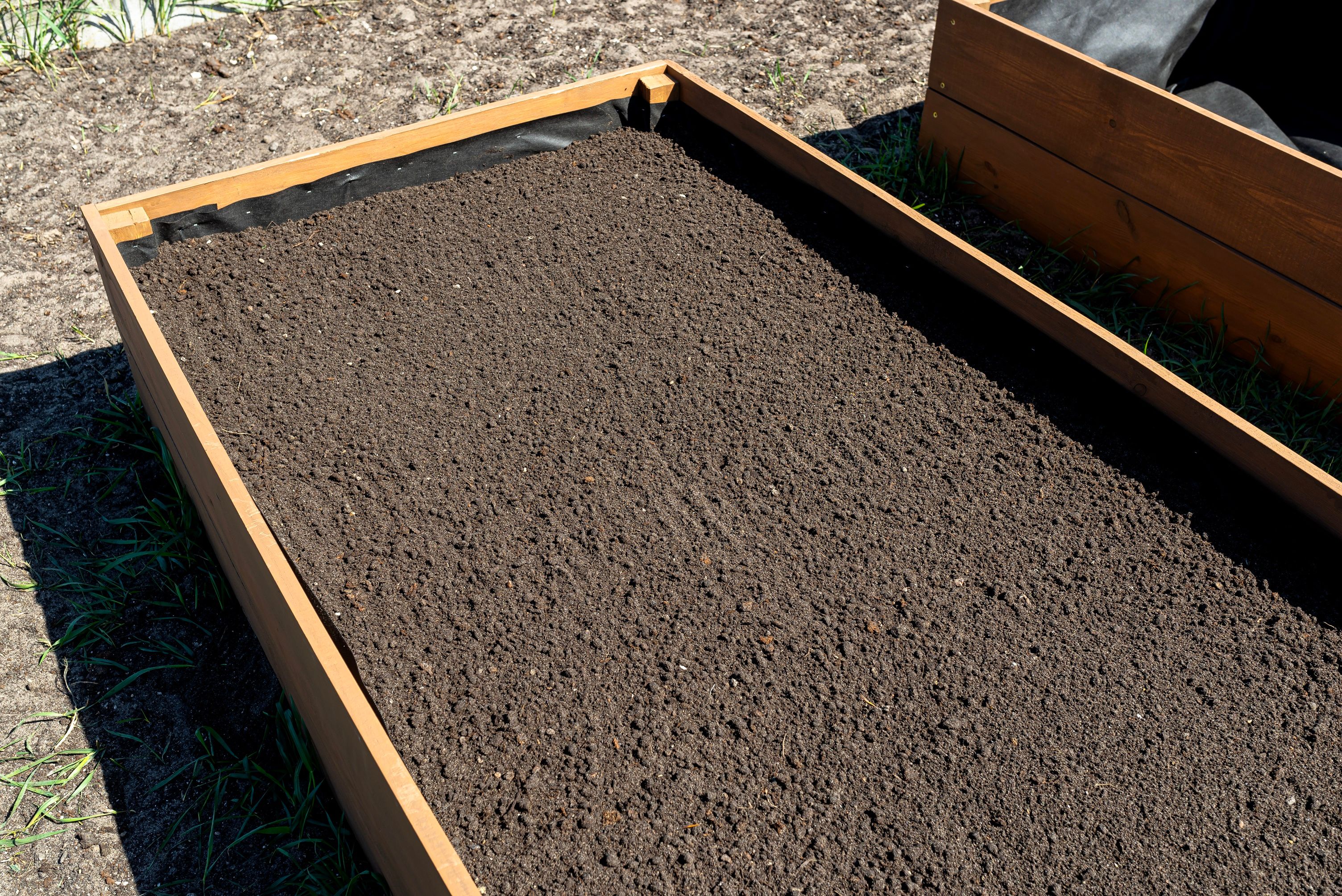
To make the most of your raised bed planter, you must choose the appropriate soil. Raised beds provide you the opportunity to use soil that is better than the topsoil of your garden. You may fill your beds with store-bought bagged raised bed soil or a customized mixture of your own, if the topsoil in your garden is not of high quality. To determine how much bed soil and fertilizer are required, you can use online tools like the soil calculator.
Since these beds require more fertilizer than ground-level ones, it is not advised to use the soil without any compost or manure. And, if your beds do not have closed bottoms, then before putting the beds in the garden, loosen the topsoil with a rake or shovel.
Although pre-made soil mixtures are excellent, making your own soil mix will be less expensive. By combining 50% garden soil, 30% compost, and 20% vermiculite, you can create the perfect blend. To prevent blending other elements, mix these on a large plastic sheet or tarpaulin. After mixing, pour the soil into the bed frame and level it.
Consider buying soil additives as well, as these can effectively boost your garden's productivity. Both organic and inorganic soil enhancers are available, including:
- Woodchips - this can be used to increase the level of nitrogen in your garden.
- Rock dust - this gives the vegetable crops the minerals they need to develop sweeter, tastier fruit.
- Peat Moss - this can be used to increase the acidity of the garden’s soil.
Weather Protection
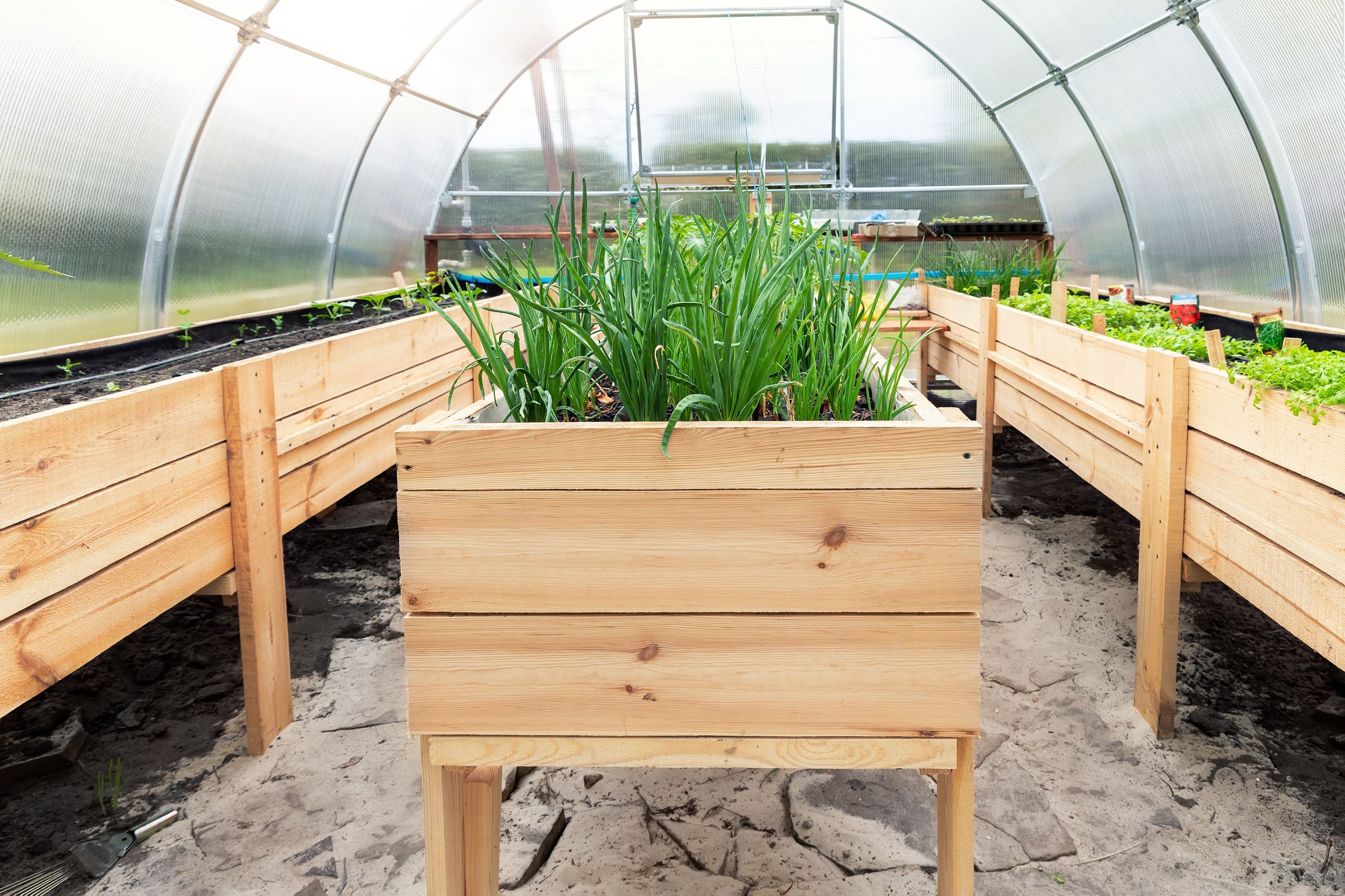
In addition to guarding the soil and plants in the garden from insects and pathogens, you must also shield them from inclement weather. To protect plants from heat, dehydration, gusts, heavy rain, and frost, your garden space must be adaptive to the changeable weather. In this case, raised bed gardening is advantageous since you can choose the appropriate measures without spending a lot of time or money.
Wind directions are changed by structures like walls, bushes, and plants, which create sheltered areas. If you can, grow your tall veggies next to these. Additionally, you can create your windbreaker using plastic panels that are created by connecting polythene sheets to a thin timber frame.
Excessive heat and sunlight during the summer might cause your plants to wither. To shield the plants from such unfavorable conditions, use garden coverings. Additionally, to keep the soil cool and wet, you should mulch the vegetable crops with hay, leaves, or dry grass clippings.
Excessive rain is also bad for raised beds, as this can erode the soil of vital nutrients and fertilizer, freeze the plants, and harm young seedlings. These problems can be avoided by covering the beds with containers of the correct size or other kinds of coverings.
Frost Blanket

You should be aware that all fragile vegetation, including tomatoes, dies at a frost of 32 °F or below. To prevent your plants from freezing, you should invest in frost blankets if you reside in a region that has more frequent cold spells throughout the winter.
A good thing about raised bed gardening is that the beds stay warmer than the surrounding ground and they also thaw faster. Additionally, it is simple to make coverings for particular beds as opposed to the entire garden. But if extreme cold is anticipated, you ought to buy frost blankets.
Frost blankets are available in a wide variety of shapes, weights, and sizes. You can buy commercial-grade frost blankets, although they can be rather pricey. Compared to that, using linen bed sheets and blankets is less expensive. But keep in mind that they are less porous than conventional frost blankets made of thinner materials. In addition to these, you can also use canvases, tarps, and plastic sheets as frost coverings, but depending on the quality and size, they can also be pricey.
You will require some sort of support to prevent the blanket's fabric from touching the foliage of the plants. Your plants will be shielded from the long winter season with the help of sturdy supports and covers. It's rather simple to construct such a structure using wooden stakes; in fact, you could even use twigs as supports. To install the frost blanket, all you have to do is lay it on top of the support, and you are done.
Hand Weeder
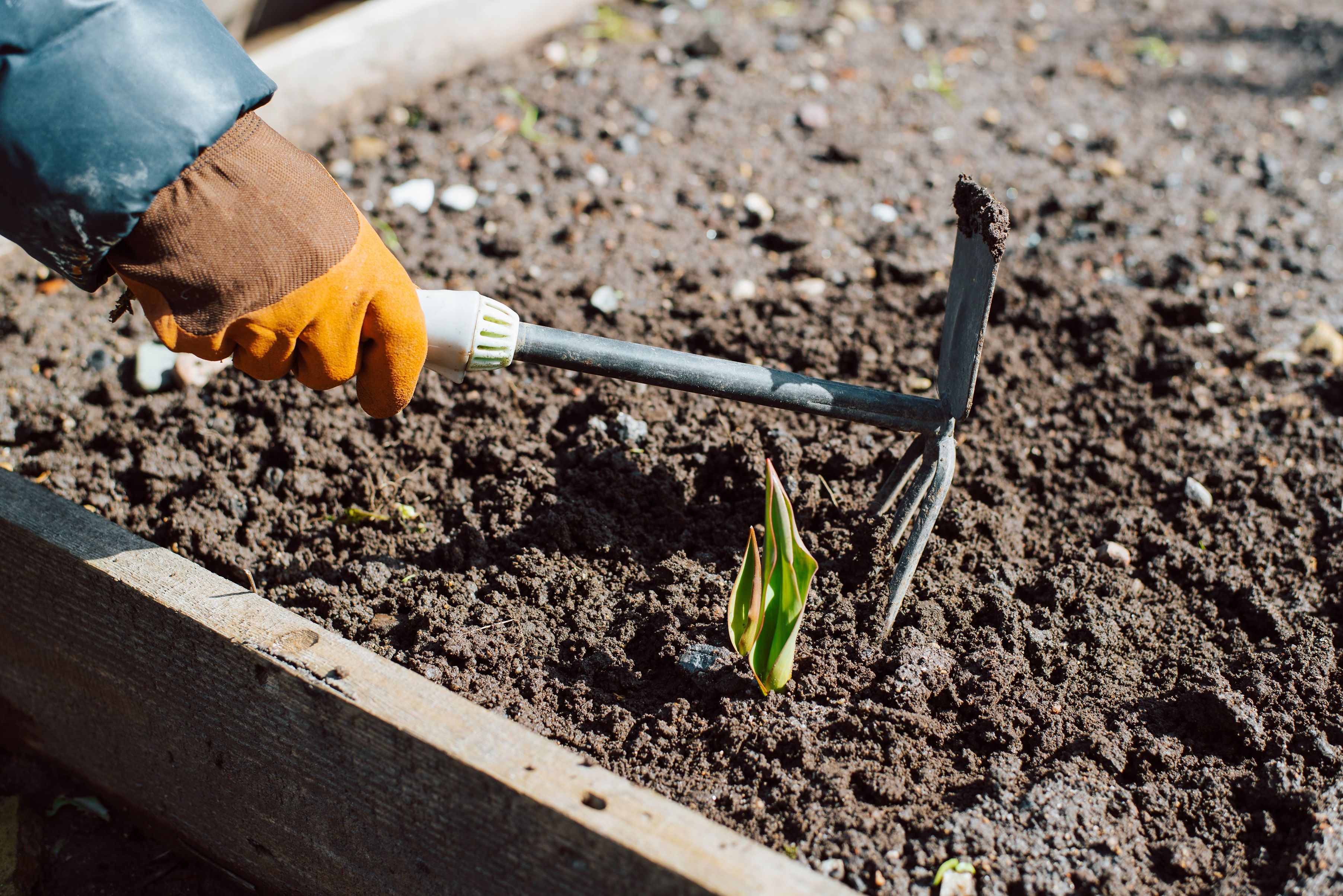
In addition to competing with the plants for moisture, sunlight, and minerals, weeds can transmit diseases that damage the garden plants. Winds and bird droppings are just a few of the various ways that weeds proliferate. Weeds can sprout here and there even after solarizing the soil. You may have to use a hand weeder if there are any new weeds or weeds that you skipped removing.
A hand weeder is a gardening tool used to pull or snip weeds. Popular hand weeders come in two varieties: puller and cutter. Pullers can be inserted into the ground to pull up the weed along with its root. Cutters, however, are less beneficial than pullers because they leave the root system intact, from which weeds can regrow.
Remember to pluck out the deep roots when using a hand weeder. Wet the soil of the beds before trying to pluck out the roots. This will make the work way easier for you.
Also keep in mind that using a hand weeder requires following safety precautions, such as wearing gloves since many hand weeders are made of steel.
Step 5: You Have Got the Garden Ready, What’s Next?
Now that you’ve constructed your beds, positioned them in a sunny location, loaded them with high-quality soil, and equipped them with an effective drainage and watering system, the only thing left to do is plant some crops.
Choose Your Plants
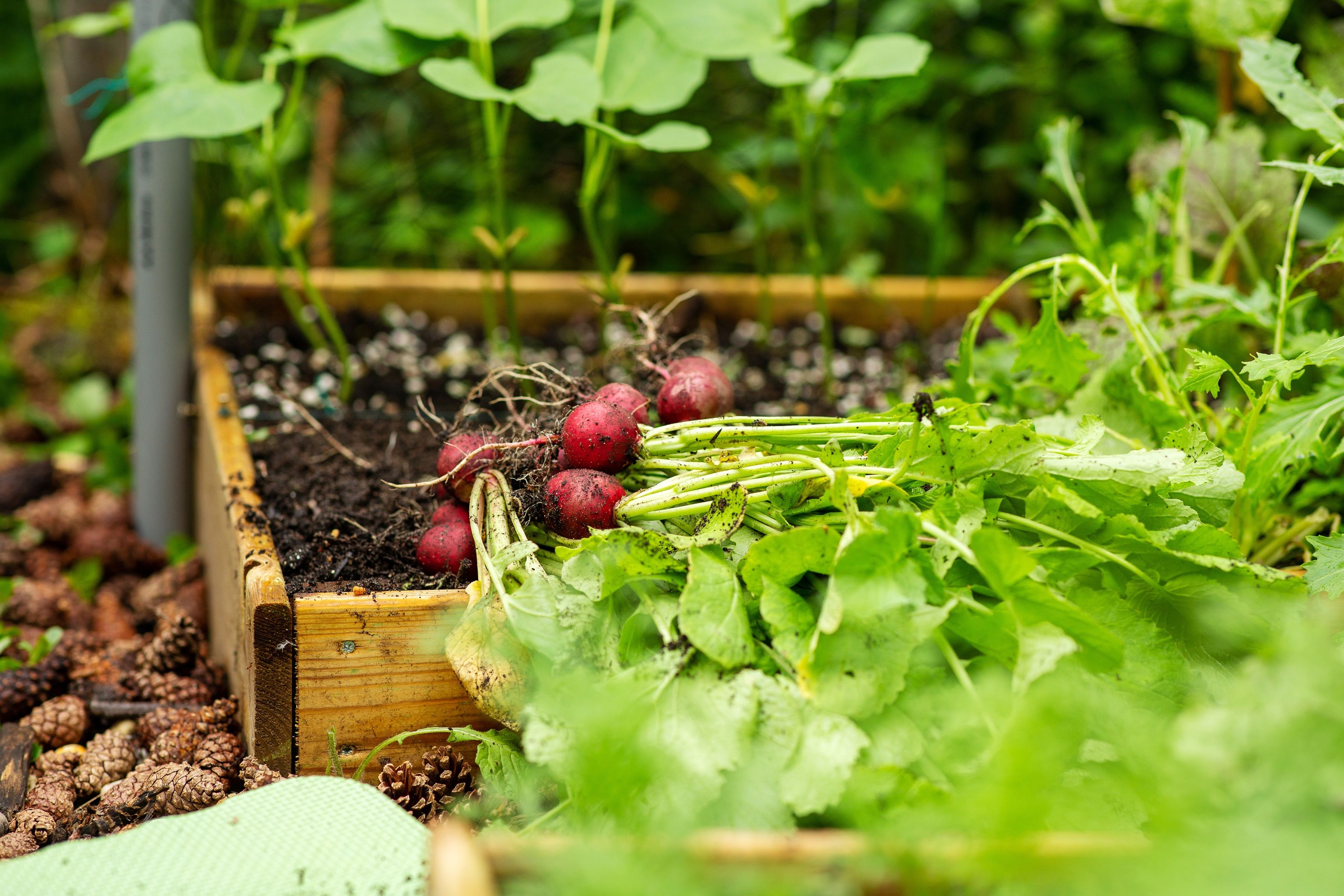
Raised garden beds are ideal for growing many veggies, flowers, and herbs, but there are a few factors to consider before planting, including:
- Soil depth
If your beds are shallow, you should plant shallow-rooted plants such as spinach, cabbage, English ivy, or hostas. But if your beds are deep enough, you may grow plants with deep roots like squash, pumpkins, hibiscus, and a variety of other vegetables and flowers.
- Quality of the seeds or plants
Due to their lower cost than individual plants, seed packets may attract you, but if the seeds don't sprout, you'll waste both your money and effort. This is why you should invest in high-quality seeds. But if you're fine with getting plants from nurseries, pick out plants that are healthy and fresh-looking.
- Raised beds size
Before choosing the plants, you should also consider the size of the bed. Plants require ample room for both healthy leaf and root growth. It might not be optimum for your plants' development to have leaves that are overlapping.
- Soil Type
Not every type of soil is suitable for growing every plant. The benefit of these beds is that depending on what you want to plant, you may mix the soil to make them acidic or alkaline.
- Upkeep
Every garden requires maintenance. Watering, cleaning off invasive plants, and other tasks are needed to be done regularly. If you don't have the time to oversee your raised bed garden, search for low-maintenance plants like radishes, peas, and peace lilies.
- Your Preferences
If you are growing veggies, consider what you and your family like eating. If no one in your family likes eggplants, there is no point in growing them unless you intend to sell them. However, if your children like tomatoes, invest extra effort into growing a large quantity of them. Keep in mind that planting too much vegetation will only cause you to get overburdened with work and your beds will become unhealthy very quickly.
Additionally, if you're growing flowers, you might want to choose varieties that complement both your surroundings and your tastes.
- Seeds or plants availability
If the plant or seeds you choose aren't available in your local nursery or garden shop, you'll need to pick another variety of plants. Sure, you can order them online, though the cost of delivery could make it quite pricey.
Also, take into account the availability of vegetables at your local supermarket; you don't want to cultivate vegetables that you can get cheaply there. However, certain vegetables are far better when grown by yourself. Additionally, herbs from the garden cost far less than those from the market.
What to Grow in a Raised Bed Vegetable Garden
Raised beds are ideal for growing vegetables. Plants grow more efficiently and healthily on raised beds because the soil is never depleted of vital nutrients, and is never compacted. These beds also have excellent drainage and irrigation systems compared to in-ground beds. Any vegetable can be grown in these beds, but the size of the beds, the weather, and your preferences will all have an impact on this.
Here is a selection of the 10 most popular and simple-to-grow veggies:
- Tomatoes
Tomatoes are simple to grow in a raised garden, but if your elevated beds are narrow, you might want to plant cherry tomatoes instead. To ensure proper plant growth, you may also need to invest in tomato cages.
- Carrots
The loose, nutrient-rich soil of these beds makes it simple to plant, and easy to cultivate carrots.
- Radishes
Along with other vegetables, you can grow radishes in the garden bed. Radish is a low maintenance plant. So if you're short on time to spare for gardening care, it might be a very good option.
- Peas
Peas are simple to cultivate in these beds, although you may need to buy supports such as trellises or cages for these plants.
- Celery
Elevated beds are the best to cultivate celery because it has shallow roots.
- Onions
Onions are excellent for these beds because you can grow them between other plants.
- Peppers
Peppers are easy to raise and need minimal upkeep.
- Zucchini
It is possible to grow zucchini of both vine and bush variants on these beds.
- Kale
Kale can be grown in the fall, and if your bed has a sufficient heating system, it can also be grown in the cold seasons.
- Beets
Beets are rich in nutrients. Before placing them in the beds, make sure your bed's soil has a depth of 12” at the minimum.
Few Tips for Beginners
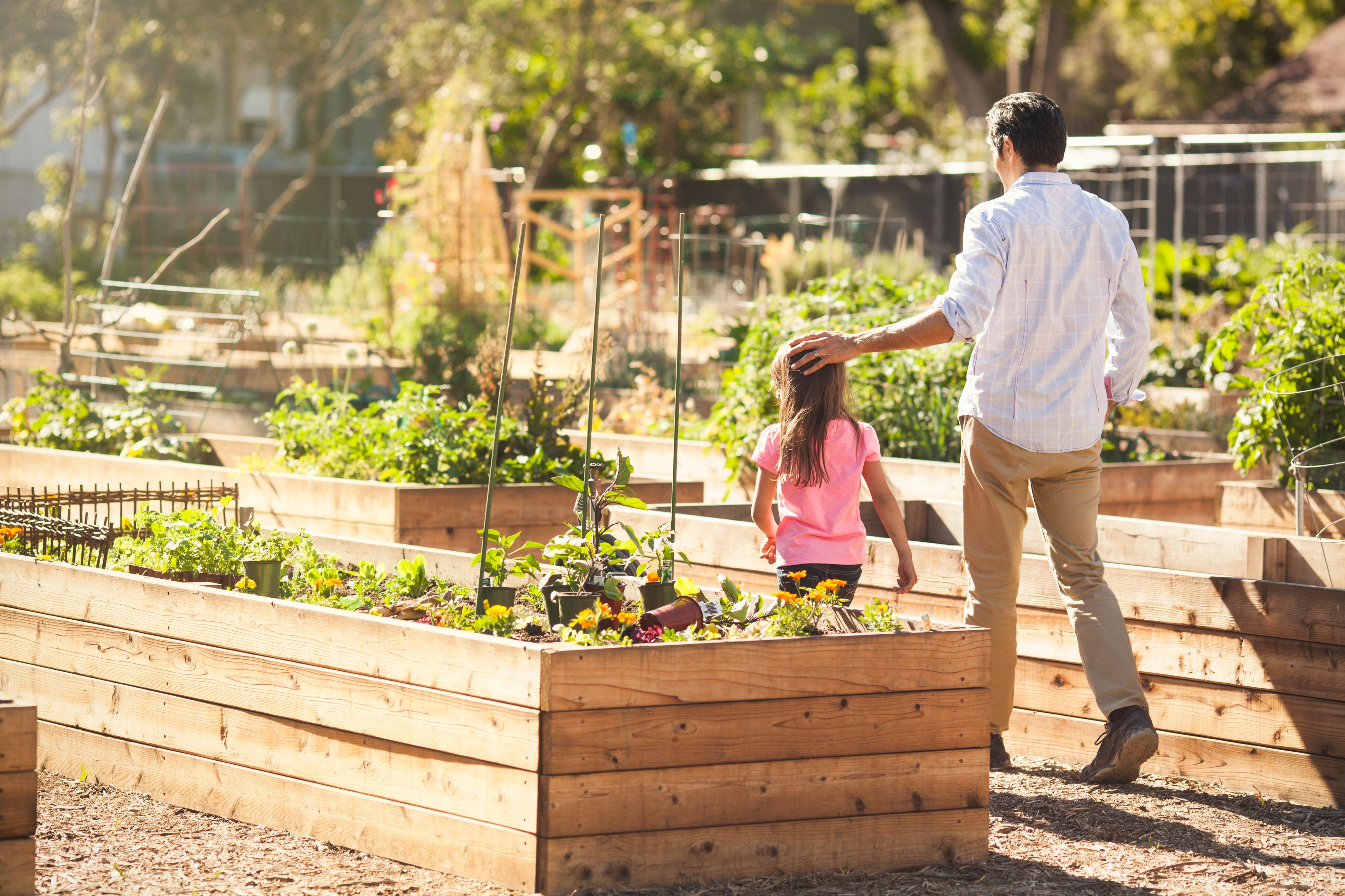
Now that you know all about raising plants in raised bed garden, here are a few quick tips that can be helpful in your gardening adventure:
- Before putting the beds in your chosen location, make irrigation arrangements.
- Fertilize regularly.
- Arrange taller plants towards the center of the beds and smaller ones at the edges.
- Do not place your beds too close to each other. Keep enough space between them so that you can easily access the beds from every side.
- Mulch your beds.
- Avoid trampling on the soil in your beds since doing so will cause soil compaction.
- Whenever you can, remove invasive plants such as grass and weeds.
- Regularly check your plants for diseases, pests, or parasites. Apply appropriate treatment based on the condition.
- Also, check if your plants are over or under-watered. Your watering cycle should be adjusted to your plants' demands.
- If possible, avoid using topsoil from your yard for your beds.
- Before planting varieties of plants in the same bed, do some research, since not all plants can be planted next to one other.
- Avoid using commercial compost; instead, try to create your own.
- Harvest the crops in the morning.
- To support your overburdened plants, use structures such as cages and trellises.
The only thing left in creating your ideal raised bed garden is for you to get started with it. So, let's go. Happy gardening.
